Industry Leaders Convene at DC Flooring Sustainability Summit to Shape Green Future
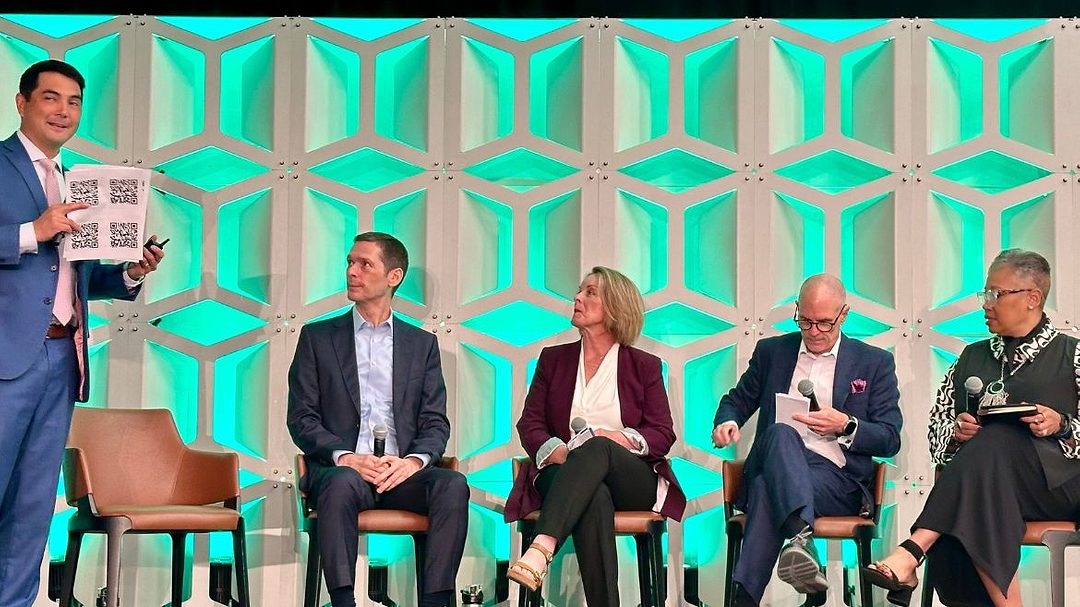
The Flooring Sustainability Summit brought together sustainability leaders within the flooring industry. Bill Griese, deputy executive director of Tile Council of North America, moderated the opening panel, which included Peter Templeton, president and CEO of the US Green Building Council; Vicki Worden, president and CEO of the Green Building Initiative; Alexander Cochran, chief advocacy officer of the American Institute of Architects; and Cheryl Durst, International Interior Design Association. Photo: Floor Trends & Installation.
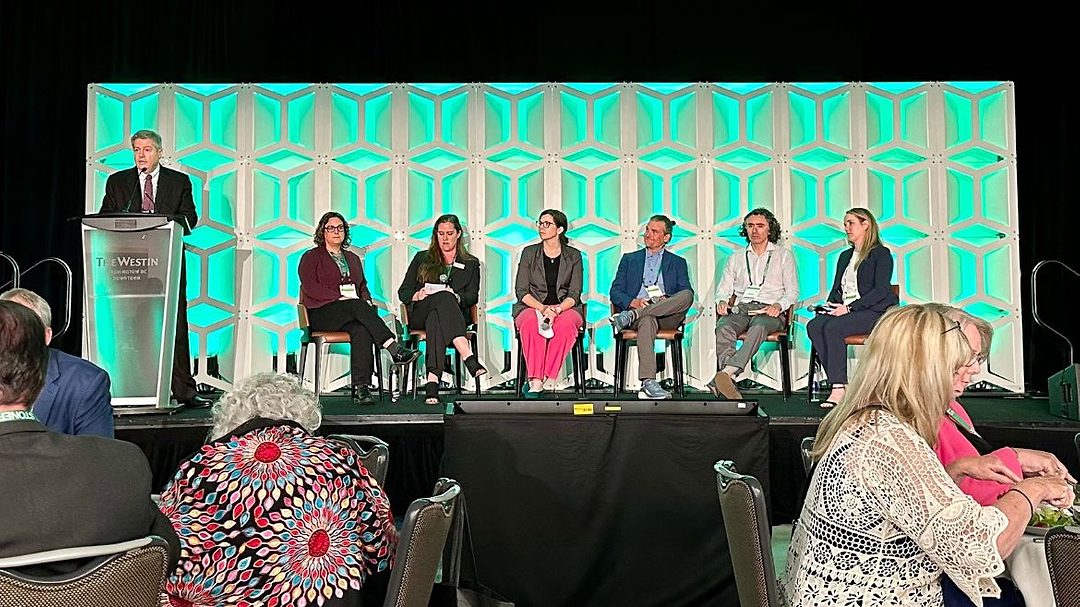
Flooring Sustainability Summit attendees received updates on green building standards, rating systems, and regulations to stay ahead of the curve. The panel was moderated by Webly Bowles, WAP Sustainability, and included
Melissa Baker, U.S. Green Building Council; Jenna Hamilton, Green Building Initiative; Mike Johnson, International Living Future Institute; Rodolfo Perez, International WELL Building Institute; Brittany Storm, MAPEI, representing Mindful Materials. Photo: Floor Trends & Installation
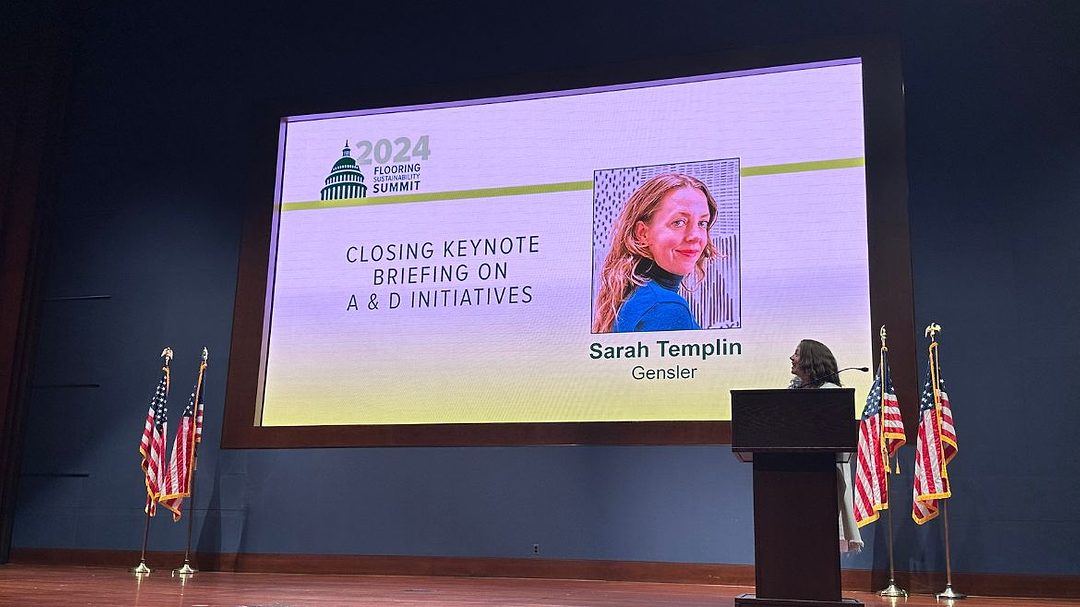
"We launched Genser Product Sustainability Standards as a step towards more circular, less carbon-intensive industry," said Sarah Templin, sustainable materials specialist, Gensler. Photo: Floor Trends & Installation.

"It will become increasingly difficult to do business with the federal government if you aren't getting greener," said Elliot Doomes, commissioner of Public Building Service - U.S. General Services Administration, told attendees of the summit. Photo: Floor Trends & Installation.
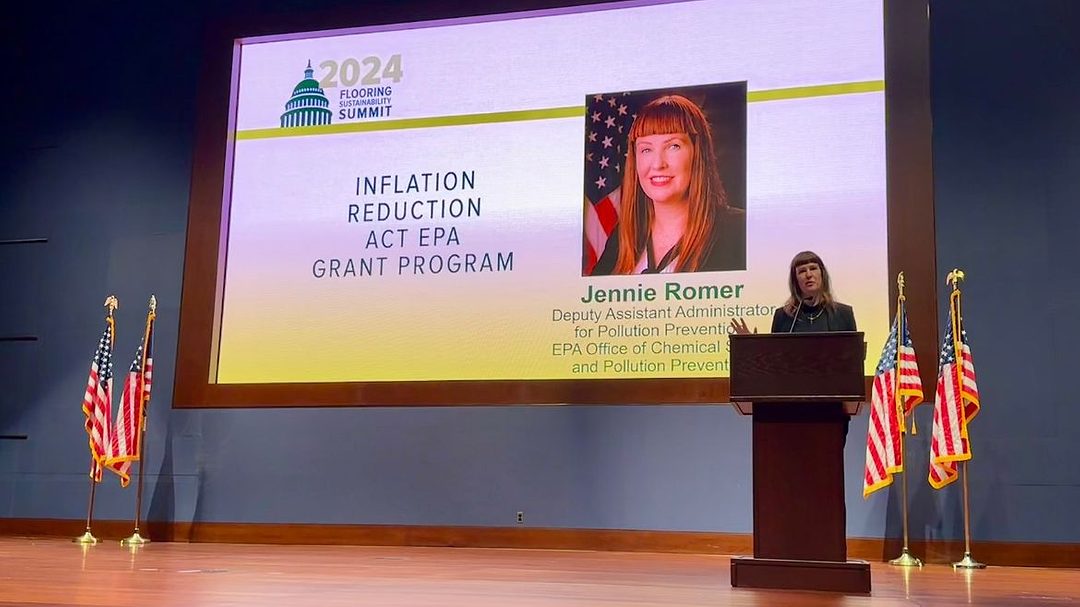
Jennie Romer, deputy assistant administrator for pollution prevention, Environmental Protection Services, announced that the Tile Council of North America was selected to receive a $2 million grant to develop Environmental Product Declarations further. Photo: Floor Trends & Installation.

Tile Council of North America Deputy Executive Director Bill Griese announced that the second-annual Flooring Sustainability Summit will take place July 16-17, 2025, at The Mayflower Hotel in Washington, D.C. Photo: Floor Trends & Installation.

Olivia LaMarche, sustainability manager at WAP Sustainability, and Shane Totten, director of sustainability, Mannington. Photo: Floor Trends & Installation.

Michael Martin, president and CEO, National Wood Flooring Association, and Ally Jenkins, director of operations, Taffy Event Strategies. Photo: Floor Trends & Installation.

Lindsey Waldrep, VP of marketing for Crossville brand, AHF Products; and Sandra Bunn, brand marketing manager, Panariagroup USA. Photo: Floor Trends & Installation.
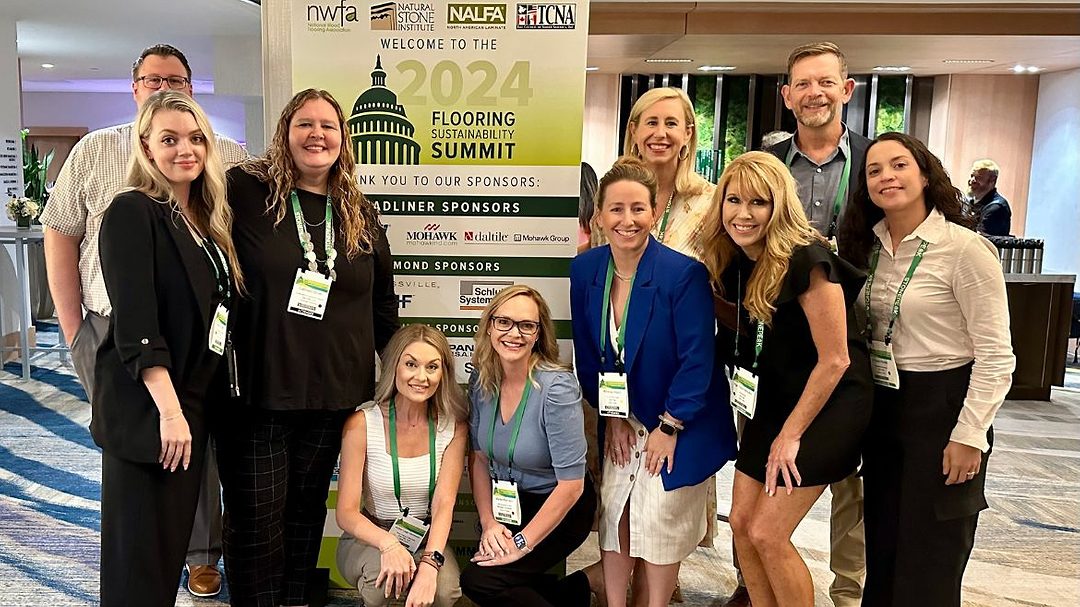
The Mohawk and Daltile teams at the Flooring Sustainability Summit in Washington, D.C. Photo: Floor Trends & Installation.












Active listening is a crucial skill for effective leadership, and that's exactly what the 225 leaders at the Flooring Sustainability Summit practiced during the three-day inaugural event in Washington D.C.
Sustainability leaders within the flooring industry, architects and designers, policymakers, and advocacy groups grappled with product lifecycle concerns and the delicate balance between cost and eco-friendly practices—all in the name of driving change.
"Getting the whole flooring industry together, competitive hats aside, let's talk about real issues, and let's find where we can agree, where we can agree to disagree, and where there are opportunities for alignment, initiative, and collaboration," said Bill Griese, deputy executive director, Tile Council of North America.
Barbara June, president of the North American Laminate Association, agreed, "This is an opportunity for us to lean in and partner with other groups, communities, and associations to educate the public and quit the silly fighting among associations and among flooring categories."
“One of the really great things about this week is that you know you don't know what you don't know, and if you don't know the right people to talk to then you're kind of under the gun and can't make as much progress," said Michael Martin, president and CEO of the National Wood Flooring Association. "It's great to have people here from the EPA and from different legislative organizations from the AIA talking about sustainability on a broader term and where flooring fits in."
"It was a unique opportunity to get all kinds of flooring organizations together and really have honest, deep conversations of how we can work together to find solutions collectively as an industry," said Malisa Maynard, chief sustainability officer at Mohawk. "It is an opportunity to really move the whole industry forward."
Day One Discussions
On day one of the summit, several hot-button issues were addressed: embodied carbon, health, environmental, social, and governance (ESG), and updates in green building standards and codes.
"I think carbon is going to continue to be one of the top drivers again, regardless of what happens with our administration changing, whether you're in a red state or a blue state, whether you love ESG or you hate ESG," said Vicki Worden, president and CEO of the Green Building Initiative. "Europe and California and the local levels are still driving this carbon conversation, and it is a global conversation. Figuring out how your products tell their stories about embodied carbon and how we collectively evolve the thinking of how flooring fits into that carbon accounting story is going to be important."
The need for alignment and clear communication throughout the supply chain was discussed, as well as simplifying complex technical concepts. Discussions emphasized the need to define terms, especially "embodied carbon," as there is no standard definition or calculation method yet."Not all of us are material scientists," said Peter Templeton, president and CEO of the U.S. Green Building Council. "We want to make sure that we are educated consumers and educated from the perspective of what is actually going to be serving the needs most officially, reducing impacts, and advancing the goals for our clients, our customers, and for our communities."
The concept of "radical collaboration" was emphasized, highlighting the importance of working together across different backgrounds to push sustainability initiatives forward
"The more we can align and the more we can radically collaborate, the more work we can get done," Griese said.
Understanding demand drivers is crucial for manufacturers to see the return on investment in sustainability efforts. The importance of considering the full life cycle (cradle to grave) of products was also highlighted, especially for flooring and finishes.
"Human beings hate ugly, and we require beauty and aesthetic simplicity like we require air, water, and all the other essential necessities of life," said Cheryl Durst, executive vice president and CEO of the International Interior Design Association. "I don't want to throw the burden back on the manufacturer, but I want to throw the burden back on the manufacturer: do better, make it beautiful, make it efficient, and then arm your sales folks with the tools because specifying the product is a long-term commitment. It is not just a transactional sale. There's so much education that needs to happen."
Day Two Discussions
On day two of the summit, attendees traveled to the U.S. Capitol Visitor Center for rapid-fire sustainability briefings and networking opportunities with industry and government leaders.
Flooring Recycling
Bob Peoples, executive director of the Carpet America Recovery Effort (CARE), discussed challenges and progress in flooring recycling, emphasizing the need for collaboration, realistic expectations, and the long-term nature of building a circular economy in the flooring industry. Peoples highlighted California's successful carpet recycling program, which has increased recycling rates from 4% to 41% since 2011. He also mentioned New York's upcoming program and potential changes in California legislation. Read more here.
"The challenges that we face going forward are significant, but they are not insurmountable," Peoples said. "Ultimately, society must bear the economic burden if we want to build a circular economy."
Reducing Greenhouse Gas Emissions
The U.S. General Services Administration (GSA), in collaboration with the Environmental Protection Services (EPA) and other federal government entities, has issued new standards for low embodied carbon construction materials. This move is part of an effort to use the federal government's purchasing power to stimulate innovation and bolster American leadership in clean manufacturing and jobs.
"It will become increasingly difficult to do business with the federal government if you aren't getting greener," Elliot Doomes, commissioner of Public Building Service, GSA, told attendees of the summit.
Jennie Romer, deputy assistant administrator for pollution prevention at EPA, said the organization has set a goal of reducing U.S. greenhouse gas emissions by 50% by 2030 and achieving a net zero emissions economy by 2050. To accelerate those goals, the EPA has selected 38 recipients nationwide to receive approximately $160 million from the Inflation Reduction Act.
The Tile Council of North America was one of the recipients and will receive a $2 million grant to develop Environmental Product Declarations. The American Wood Council was selected to receive $6 million to increase transparency in the wood products industry and reduce embodied carbon emissions in building products.
After a successful summit, Griese announced that the second-annual Flooring Sustainability Summit will take place July 16-17, 2025, at The Mayflower Hotel in Washington, D.C.
Watch the Video
Looking for a reprint of this article?
From high-res PDFs to custom plaques, order your copy today!






n.png?height=200&t=1718302788&width=200)













